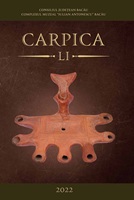Memorie şi istorie în comunism: arta oficială, Tezele din iulie 1971 şi apariţia cultului personalităţii lui Nicolae Ceauşescu
Memory and history in communism: the official art, the Theses of July 1971 and the appearance of the cult of personality of Nicolae Ceausescu
Author(s): Adrian DeheleanuSubject(s): Political history, Social history, Post-War period (1950 - 1989), History of Communism, Sociology of Art, History of Art
Published by: Complexul Muzeal “Iulian Antonescu” Bacău
Keywords: official art; communism; re-Stalinization; isolation; censorship; ideology;
Summary/Abstract: In the stage of normalization of the socialist societies, when the communist societies pursued „the consolidation of the socialist society”, going from the mid 1960s to the early 1970s, there emerged a new artistic situation as an outcome of the relaxation of the totalitarian regimes. In parallel with the sociopolitical „thaw”, with the growing patriotic-nationalistic requirements and the overture to the West, artistic production diversified in a spectacular way, tending to rejoin local visual traditions and to reconnect with western modern art. Under the circumstances, totalitarian art continued to define the production of official art demanded by the party apparatus, yet alternative art blossomed as well. This art yearned to assimilate as quickly as possible the international artistic trends, opening up to post-war western neo-avant-gardes, though evolving within the field of force of totalitarian culture, immobile in its deep-set idiosyncrasies. Nonetheless, at that time totalitarian culture allowed some living space to this non-official culture, the outcome being a progressive division into two different types of cultures, one official, and the other more or less independent and subversive. In July 1971, Nicolae Ceausescu announced new measures for the „’Improvement of the political-ideological activity”, which remained in the history of Romanian communism as the Theses of July, a name reminiscent of the April Leninist theses. The theses of Ceauşescu represented a new guide for all cultural productions in Romania. From an ideological point of view, the theses were rather dogmatic than innovative: concepts long abandoned in the rest of the communist camp, as socialist realism were returned to topical by Ceauşescu, who put an end to all illusions about liberalization of cultural life, maintained at beginning of his leadership. In other words, Romanian intellectuals had to draw inspiration exclusively from domestic sources, more precisely from the realities of socialist Romania. Consequential: after a short period in which the normal relations with the West were resumed, Romanian culture was convicted by the communist regime a second time, following the forced Russianization during Stalin’s era, to years of development in complete isolation from any influence.
Journal: Carpica
- Issue Year: 2022
- Issue No: LI
- Page Range: 407-431
- Page Count: 25
- Language: Romanian

